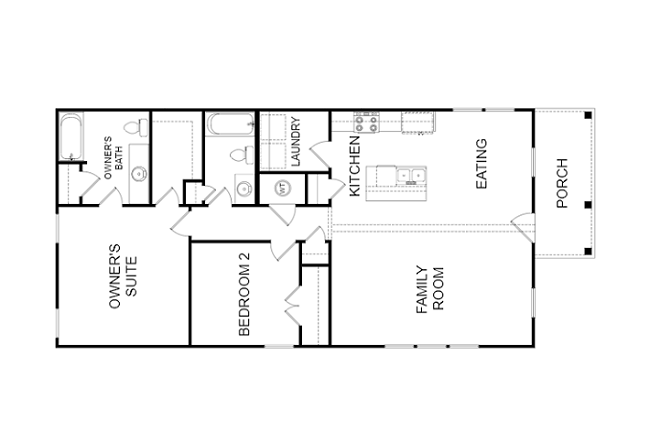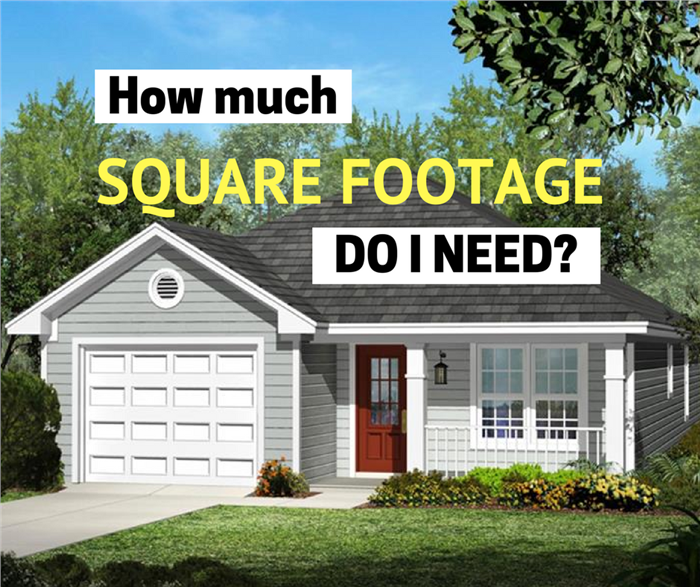A Guide About How Much Square Footage Do You Need?
Sep 20, 2022 By Susan Kelly
Introduction
Many unknowns and stresses are involved in finding a new home. If you're in the market for a new home, remodelling your current dwelling, or planning a construction project, one of the first things you'll need to answer is how many square feet you'll need. The square footage of a home or apartment may usually be approximated from the property description, online floor plan, or other means of describing the property. A house of 1,000 square feet could be too tiny for a large family, but it could be just suitable for a young couple.
What Exactly Is a Square Foot?
A square foot is a relatively easy unit to understand. An informal gathering with 12-inch-wide sides. Each regular floor tile typically covers an area of one square foot. It's also possible that various people could come up with different measures for the same amount of square footage, depending on their criteria for measurement. Some real estate brokers use living space as a metric, while others use total space. Included in this category are storage spaces such as closets and utility closets.
What Do You Need To Consider, When Thinking About The Size Of An Apartment?
Although the apartment's square footage is a significant factor, it is not the only one to think about. It is essential to think about the apartment's layout, the places within the flat, the people you'll be living with, and your own and your roommates' personal preferences and habits. Apartment size depends on several factors, including the number of bedrooms, bathrooms, and other living areas and the apartment's layout. Many enormous flats are so jam-packed with little rooms that the whole place feels claustrophobic. However, many studio apartments cleverly use open floor plans to give the illusion of more room. A good apartment will have both vast and small spaces.

Deciding How Much Square Footage You Need
Different people have different square footage requirements due to various circumstances. It's possible that single people don't require as much square footage as couples or families. Consider how much personal space you and your roommate will need when deciding on an apartment size (i.e., a private, quiet room and dining space). The quantity and dimensions of your personal belongings and the furnishings you intend to bring may have a role. A king-size bed, for instance, will require 42 square feet of floor space. A 12-foot wall is necessary for your 8-foot sectional. Make sure you have enough room to walk around your essential furniture by taking measurements of its width and depth and keeping in mind that you'll need about 30 inches of clearance on all sides.
How to Calculate Square Footage
"Square footage" refers to an area measured in square feet. Similarly, square yards are a measure of size. The site is often measured in square feet, but square metres are also often used. Let's say you need to figure out how much flooring or carpet you need for a rectangular space, like a room. If you want to know how many square feet an area is, you can measure its length and width and then multiply those figures to get the answer (ft2). An L-shaped area can be divided into two equal parts by drawing a line down the middle, and the two halves can then be used as though they were one regular-shaped rectangle. Get the sum by calculating the area of each subsection and adding them up. To calculate the square footage of a room when the measurements are in various units, such as feet and inches, convert the values to feet and multiply them.
Understanding the Abbreviations on the Home Listings
As you become more familiar with listings, you will find that reading them becomes less of a chore. (Here's a tip: list the most common abbreviations you encounter and their definitions. A code sheet can help you make sense of the crucial data on a listing sheet until you learn the abbreviations. Both "SF" and "APX SF," which stands for "approximate square footage," are commonly used to abbreviate square footage. Because square footage is one criterion used to calculate the market value, this is a nuance that real estate brokers are expected to get right.

Conclusion
Houses that are only 1,500 square feet may look enormous compared to your current home if it is only 1,000 square feet. Remember that quantitative descriptions of a home's layout are only part of the tale. Houses of duplicate square footage but with an open design (such as a 1,300-square-foot home) can provide the impression of more space than a 1,500-square-foot home with closed-off areas.








